Corn and wheat land ahead of trade expectations.

Grain export inspections for the week ending April 19 saw soybean volume stay relatively low – hardly a surprise, given the ongoing trade spat with China has put exports to that country in jeopardy. However, corn and wheat export inspections offered a pleasant surprise, with both grains reaching above trade expectations last week.
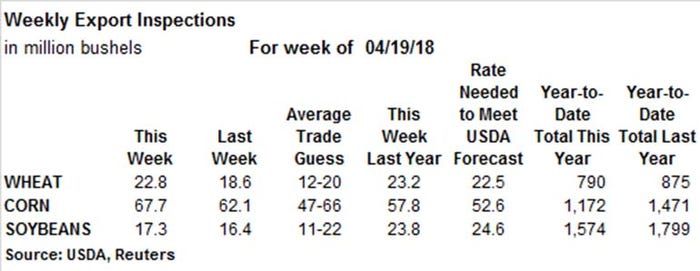
Soybean inspections actually ended up slightly up compared to the prior week, with 17.3 million bushels versus 16.4 million bushels. Trade analysts were expecting another low volume last week, with a guess that ranged between 11 million and 22 million bushels. Last week’s totals didn’t keep up with the weekly rate needed to reach USDA forecasts, now at 24.6 million bushels.
Cumulative totals for the 2017/18 marketing year, which began September 1, are at 1.574 billion bushels, moderately behind the pace set in 2016/17, with 1.799 billion bushels.
China was the No. 1 destination for soybean export inspections, but only accounted for a little more than one-fourth of the total amount, with 4.7 million bushels. Other top destinations included Indonesia (3.3 million bushels), the Netherlands (3.0 million bushels), Mexico (2.3 million bushels) and Taiwan (1.0 million bushels).
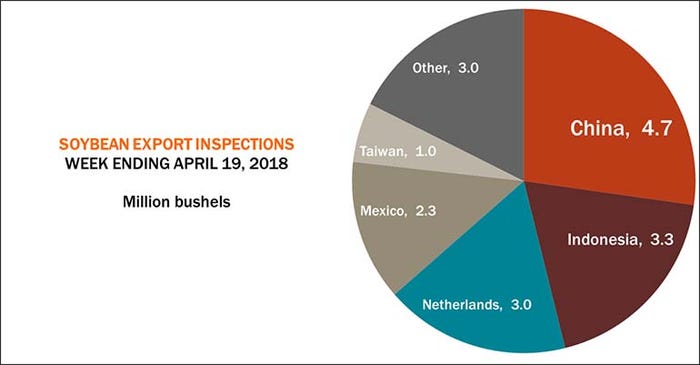
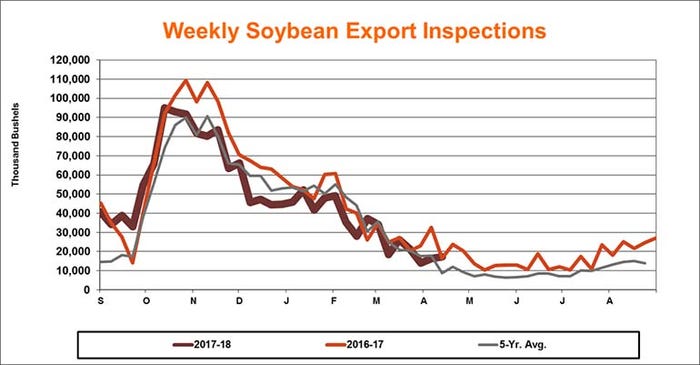
Corn export inspections notched slight improvements from the prior week, with 67.7 million bushels versus 62.1 million bushels. That also bested average trade estimates of 47 million to 66 million bushels, and stays ahead of the weekly rate needed to reach USDA forecasts, now at 57.8 million bushels. The year-to-date totals for marketing year 2017/18, which began September 1, have reached 1.172 billion bushels, 20% below the pace set in 2016/17.
South Korea was the No. 1 destination for corn export inspections last week, with 10.8 million bushels. Thirteen other countries accounted for at least 1 million bushels in corn exports last week, including Mexico, Colombia, Japan, Vietnam, Taiwan, Peru, China, Portugal, Spain and several others.

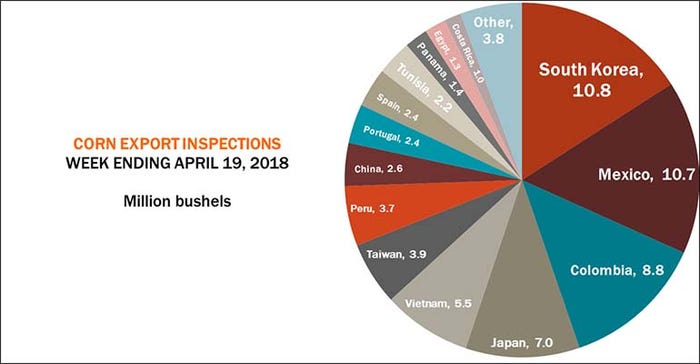
Wheat export inspections last week also bested average trade guesses (12 to 20 million bushels,), with 22.8 million bushels. That was moderately higher than the prior week’s total of 18.6 million bushels, and it barely exceeded the weekly rate needed to meet USDA forecasts, now at 22.5 million bushels. For the 2017/18 marketing year, which began June 1, cumulative wheat export inspections have reached 790 million bushels, compared to 875 million bushels at this time last year.
Japan was the No. 1 destination for U.S. wheat export inspections last week, with 4.3 million bushels. Other top destinations included Thailand (4.1 million bushels), Mexico (3.1 million bushels), Nigeria (2.1 million bushels), South Korea (2.0 million bushels) and Colombia (2.0 million bushels).
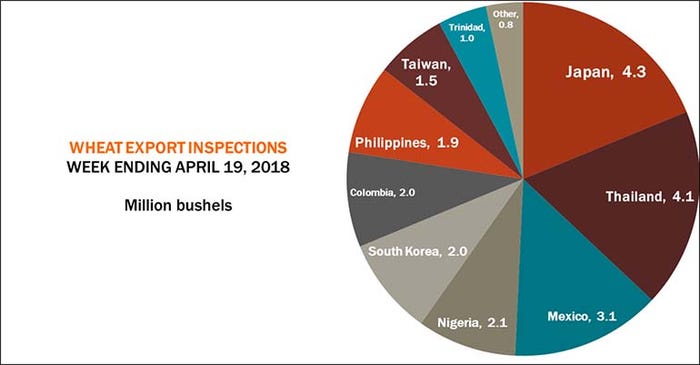
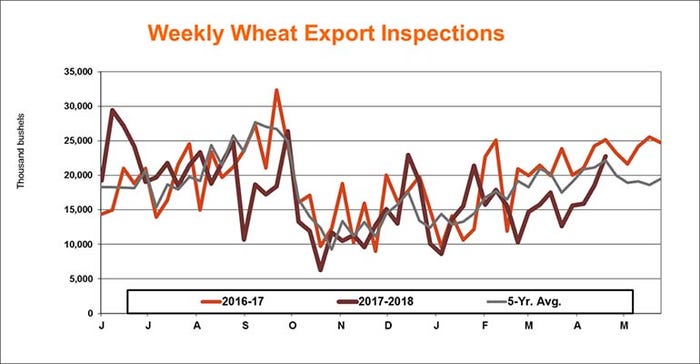
About the Author(s)
You May Also Like



.png?width=300&auto=webp&quality=80&disable=upscale)

